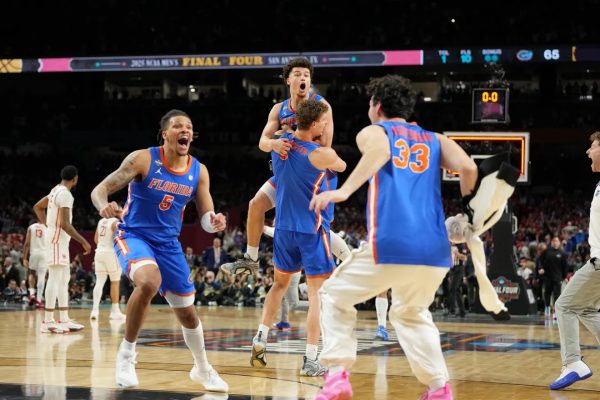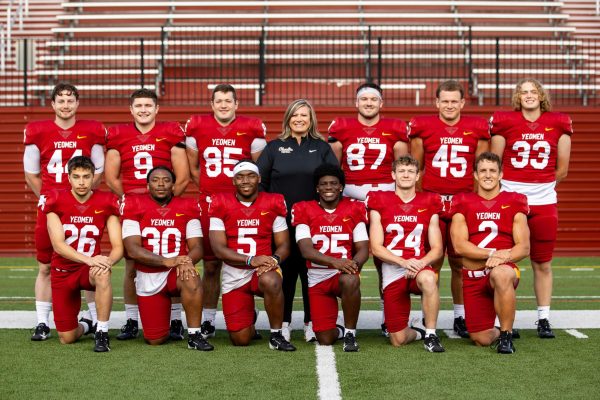Oberlin Sports: Are Teams Actually That Bad?
Oberlin College football team competing on home turf.
Most Oberlin students would tell you that the sports teams are terrible. The College is a Division III school, and its student-athletes do not receive athletic scholarships or perform on national television like athletes at larger state schools. Even within Division III, Oberlin sports teams are often unable to keep up with their competition. However, if you are convinced that Oberlin is terrible at sports, you might just be looking in the wrong places.
It is true that out of the current ten North Coast Athletic Conference schools, Oberlin ranks ninth with only 23 conference championships across all sports since 1985. Denison University and Ohio Wesleyan University are tied for first with 157 conference titles.
The reputation of Oberlin athletics is often dictated by the sports that draw the biggest crowds — which have historically held losing records. In Ohio and most of the United States, football matters, and Oberlin’s football team may be the pillar of Oberlin sports’ general incompetence. Despite its early history as a powerhouse football program that competed with The Ohio State University and the University of Michigan 100 years ago, it has not had a winning season since 1990. The team was featured on ESPN.com multiple times for its historic 44-game losing streak during the late ’90s and 2000s. Since then, the program has only marginally improved and barely won three games since 2018.
Football has not been the only Oberlin sport to be featured in national media in a negative light. In an MLB.com article about an unconventional tactic that the baseball team used in the 1990s, the writer describes Oberlin as, “a school known for hippies, artists and left-of-center leanings, where the baseball was bad and the uniforms were uncomfortable.” Not much has changed for the team since then, but the team did have a proud moment when it shocked the Division III baseball world by winning the NCAC tournament in 2015 — despite having a losing record overall.
While there are clear examples of athletic ineptitude in Oberlin’s past and present, there are also successful teams that receive less recognition.
For example, the women’s track and field team has excelled in recent years, winning three straight NCAC games in both outdoor and indoor track from 2017–19. In 2018, the team finished eighth in the national rankings for all of NCAA Division III. Individuals who stand out in this team include Monique Newton, OC ’18, who set conference records for shot-put and discus in 2018, and fourth-year Sarah Voit, who set the pole vault record the following year.
The women’s cross country team may be the most successful Oberlin athletics program as it has secured nine NCAC titles since 2006. During those conference championships, Oberlin has had four different runners win the race individually: winner Joanna Johnson in 2007, 2008, and 2010; Molly Martorella in 2012; Emma Lehman in 2014; and Linnea Halston in 2017. The team has also done well in the national rankings, finishing in the top 15 five times since 2011.
There are several teams that put together a range of results from season to season or stay consistently average. Women’s and men’s lacrosse, soccer, and tennis are good examples of teams that regularly hold their own within conference play and even when facing out-of-conference Division III schools.
It appears that in recent history Oberlin has had a mix of elite, average, and poor athletics teams. In the current fall 2021 season, some teams continue to struggle — but the volleyball and women’s soccer teams each won at least half of their games so far. If we gave each of the school’s athletics programs a fair look, it could change our perception that Oberlin is a terrible sports school.






